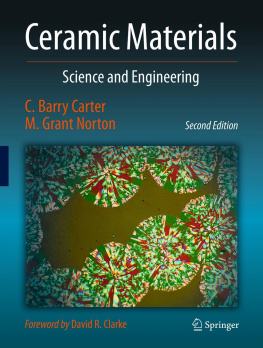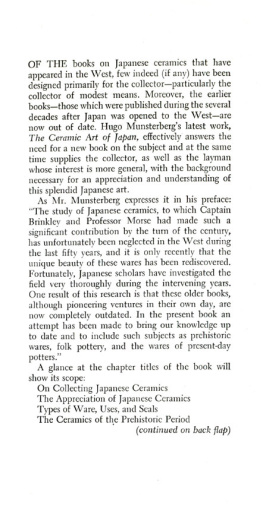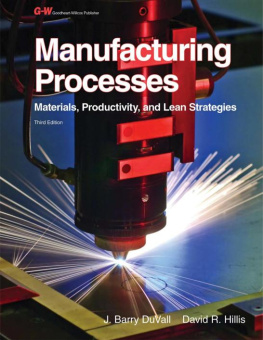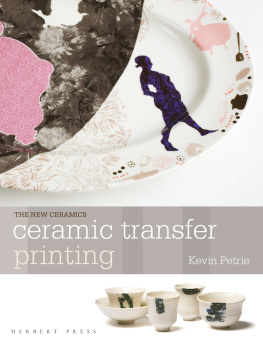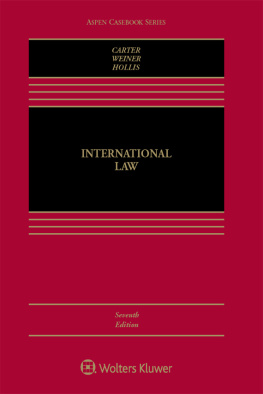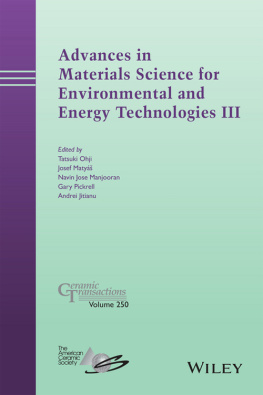Chapter Preview
In materials science we often divide materials into distinct classes. The primary classes of solid materials are ceramics, metals, and polymers. This classification is based on the types of atoms involved and the bonding between them. The other widely recognized classes are semiconductors and composites. Composites are combinations of more than one material and often involve ceramics, such as fiberglass. Semiconductors are materials with electrical conductivities that are very sensitive to minute amounts of impurities. As well see later, most materials that are semiconductors are actually ceramics. An example is gallium nitride, the blue-green laser diode material.
In this chapter we define what we mean by a ceramic. We also describe some of the general properties of ceramics. The difficulty when drawing generalizations, particularly in this case, is that it is always possible to find an exception to the rule. It is because of the wide range of properties exhibited by ceramics that they find application in such a variety of areas. A general theme throughout this textbook is the importance of the interrelationship between the way in which a ceramic is processed, its microstructure, and its properties. We give some examples of these interrelationships in this chapter to illustrate their importance.
1.1 Definitions
If you look in any introductory materials science book you find that one of the first sections describes the classification scheme. In classical materials science, materials are grouped into five categories:
Metals
Polymers
Ceramics
Semiconductors
Composites
The first three are based primarily on the nature of the interatomic bonding, the fourth on the materials conductivity, and the last on the materials structurenot a very consistent start.
Metals , both pure and alloyed, consist of atoms held together by delocalized electrons that overcome the mutual repulsion between the ion cores. Many main-group elements and all of the transition and inner transition elements are metals. They also include alloyscombinations of metallic elements or metallic and nonmetallic elements (such as those in steel, which is an alloy of primarily Fe and C). Some commercial steels, such as many tool steels, contain ceramics. These are the carbides (e.g., Fe3C and W6C) that produce hardening and enhance wear resistance, but they also make it more brittle. The delocalized electrons give metals many of their characteristic properties (e.g., good thermal and electrical conductivity). It is because of their bonding that many metals have close packed structures and deform plastically at room temperature.
Polymers are macromolecules formed by covalent bonding of many simpler molecular units called mers. Most polymers are organic compounds based on carbon, hydrogen, and other nonmetals such as sulfur and chlorine. The bonding between the molecular chains determines many of their properties. Cross linking of the chains is key to the vulcanization process that turned rubber from an interesting but not very useful material into, for example, tires that made traveling by bicycle much more comfortable and were important in the production of the automobile. The terms polymer and plastic are often used interchangeably. However, many of the plastics that we are familiar with are actually combinations of polymers and often include fillers and other additives to give the desired properties and appearance.
Ceramics are usually associated with mixed bondinga combination of covalent, ionic, and sometimes metallic. They consist of arrays of interconnected atoms; there are no discrete molecules. This characteristic distinguishes ceramics from molecular solids such as iodine crystals (composed of discrete I2 molecules) and paraffin wax (composed of long-chain alkane molecules). It also excludes ice, which is composed of discrete H2O molecules and often behaves just like many ceramics. The majority of ceramics are compounds of metals or metalloids and nonmetals. Most frequently they are oxides, nitrides, and carbides. However, we also classify diamond and graphite as ceramics. These forms of carbon are inorganic in the most basic meaning of the term: they were not prepared from a living organism. Richerson () says most solid materials that arent metal, plastic, or derived from plants or animals are ceramics.
Semiconductors comprise the only class of material based on a property. They are usually defined as having electrical conductivity between that of a good conductor and an insulator. The conductivity is strongly dependent upon the presence of small amounts of impuritiesthe key to making integrated circuits. Semiconductors with wide band gaps (greater than about 3 eV), such as silicon carbide and boron nitride, are becoming of increasing importance for high-temperature electronics; for example, SiC diodes are of interest for sensors in fuel cells. In the early days of semiconductor technology, such materials would have been regarded as insulators. Gallium nitride (GaN), a blue-green light-emitting diode (LED) material is another ceramic that has a wide band gap. Annual sales of GaN-based LEDs exceed $7.5 billion, which is greater than the total sales of gallium arsenide (GaAs) devices.
Composites are combinations of more than one material or phase. Ceramics are used in many composites, often as the reinforcement. For example, one of the reasons a B-2 stealth bomber is stealthy is that it contains over 22 t of carbon/epoxy composite. In some composites the ceramic is acting as the matrix (ceramic matrix composites, or CMCs). An early example of a CMCdating back over 9,000 yearsis brick. These often consisted of a fired clay body reinforced with straw. Clay is an important ceramic and is the backbone of the traditional ceramic industry. In concrete, both the matrix (cement) and the reinforcement (aggregate) are ceramics.
The most widely accepted definition of a ceramic is given by Kingery (): a ceramic is a nonmetallic, inorganic solid . Thus, all inorganic semiconductors are ceramics. By definition, a material ceases to be a ceramic when it is melted. At the opposite extreme, if we cool some ceramics enough they become superconductors. All of the so-called high-temperature superconductors (HTSCs) (those that lose all electrical resistance at liquid-nitrogen temperatures) are ceramics. Trickier is glass, such as is used in windows and optical fibers. Glass fulfills the standard definition of a solid: it has its own fixed shape but is usually a supercooled liquid. This property becomes evident at high temperatures, when it undergoes viscous deformation. Glasses are clearly special ceramics. We may crystallize certain glasses to make glass-ceramics such as those found in Corningware. This process is referred to as ceramming the glass (i.e., making it into a ceramic). We stand by Kingerys definition and have to live with some confusion. We thus define ceramics in terms of what they are not.

